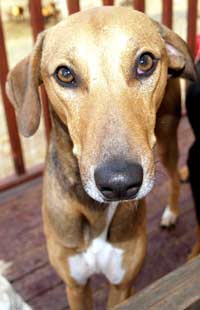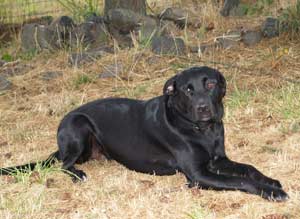Why feed a species-appropriate raw diet?
It's what our pet carnivores evolved to eat. No man-made diet can hope to compare to fresh natural whole food. The benefits of a whole natural diet include improvements in multiple areas. Most people report significant improvements in all areas after switching to a whole natural diet. One of the simplest but most profound improvements is in dental health. Chewing whole raw meaty bones scrubs teeth better than brushing and flossing. The periodontal disease suffered by most commercially-fed animals leads to heart, kidney, and liver disease, in addition to the painful gingivitis and tooth root abscesses typical of the kibble-fed pet. Studies have shown that over 80% of pets have periodontal disease by the age of 2. Foul breath is one of the outward symptoms of this deadly disease from which millions of commercially-fed pets suffer and die.
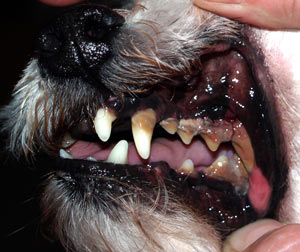
Six year old Koko had been on kibble and treats all his life. Despite annual visits, his veterinarian had never recommended any dental care. Six teeth were extracted after this photo was taken.
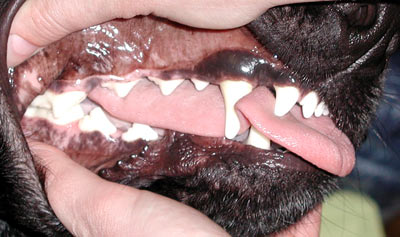
Raw fed pets typically have shiny teeth and healthy mouths. Because of this, they are at a lower risk of heart, liver, and kidney disease, to name but a few.
Colby is the same age as the dog above, and has never had a professional teeth cleaning either. He has been fed a prey-model raw diet since the age of 10 months.
People who switch to raw feeding are often amazed at the difference in their pets' coats. The require less frequent bathing, smell better, and have softer thicker fur. Dogs and cats that had terrible skin issues before raw feeding often regrow their hair and heal from the chronic hot spots and infections.
Iss Cais Me is two years old and has never had a bath, yet her coat is silky and gleaming. She has been fed raw since she was found abandoned on a highway at 12 weeks of age.
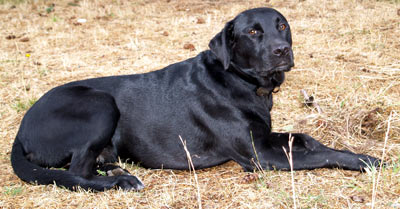
Improved temperament and attitude is another reason to switch to raw. Inappropriate diets in dogs can lead to hyperactivity, difficulty in focusing, and other behavioral and training problems. Dogs switched to raw typically have more energy and endurance than before, but are calmer and easier to train.
Cais Me is an active high-energy two-year-old. In this photo, she had been interrupted from a vigorous play session with the other dogs. She immediately went into a "down" when asked to do so, and waited calmly until released. Mouse over the picture to see how she springs back into playing as soon as she gets the "ok".
(if it doesn't work tell your browser may be blocking content).
Why switch to raw?
To have a happier, healthier pet with cleaner teeth, better coat, and fewer medical problems. So you can spend more time with your furry friend and less time grooming, scooping the yard, and visiting the vet to address problems caused by poor diet.
Because you want your pet to live the longest, healthiest life possible.
